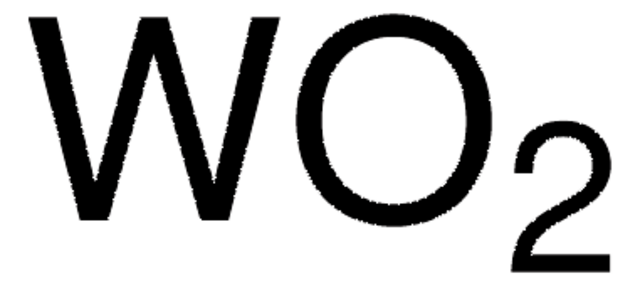778346
Tungsten(IV) carbide
nanopowder, hexagonal, 150-200 nm, ≥99% trace metals basis
Synonym(s):
Tungsten monocarbide, Wolfram carbide
About This Item
Recommended Products
assay
≥99% trace metals basis
form
nanopowder
particle size
150-200 nm
SMILES string
[C-]#[W+]
InChI
1S/C.W/q-1;+1
InChI key
UONOETXJSWQNOL-UHFFFAOYSA-N
Looking for similar products? Visit Product Comparison Guide
Related Categories
1 of 4
This Item | 241881 | 400505 | 636959 |
|---|---|---|---|
| assay ≥99% trace metals basis | assay ≥99% | assay 99.99% trace metals basis | assay ≥97% trace metals basis |
| particle size 150-200 nm | particle size 2 μm | particle size −100 mesh | particle size <150 nm (spherical) |
| form nanopowder | form powder | form powder | form nanopowder |
| Quality Level 100 | Quality Level 100 | Quality Level 100 | Quality Level - |
Storage Class
11 - Combustible Solids
wgk_germany
nwg
flash_point_f
Not applicable
flash_point_c
Not applicable
Choose from one of the most recent versions:
Already Own This Product?
Find documentation for the products that you have recently purchased in the Document Library.
Our team of scientists has experience in all areas of research including Life Science, Material Science, Chemical Synthesis, Chromatography, Analytical and many others.
Contact Technical Service











